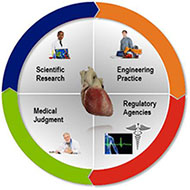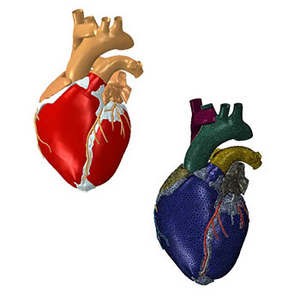The whole-heart geometry used for the simulation. On the left is
$ 18.00 · 4.8 (600) · In stock

Download scientific diagram | The whole-heart geometry used for the simulation. On the left is the mesh of the heart clipped in the longitudinal axis. The thick layer with the coarser mesh surrounding the four chambers is the pericardial layer. Pictured on the right is the heart without the pericardial layer. from publication: Validating a Numerical Simulation of Human Heart Motion Using Clinical Data | Numerical simulations are increasingly often involved in developing new and improving existing medical therapies. While the models involved in those simulations are designed to resemble a specific phenomenon realistically, the results of the interplay of those models are | Motion, Heart and Numerical Simulation | ResearchGate, the professional network for scientists.

A comprehensive mathematical model for cardiac perfusion

Living Heart Project SIMULIA™ - Dassault Systèmes®

Axel LOEWE, Assistant Professor, PhD, Karlsruhe Institute of Technology, Karlsruhe, KIT, Institute of Biomedical Engineering (IBT)

Whole-Heart Modeling Circulation Research

Whole-heart modelling with valves in a fluid–structure interaction framework - ScienceDirect
Linking statistical shape models and simulated function in the healthy adult human heart
Control of Whole Heart Geometry by Intramyocardial Mechano-Feedback: A Model Study
Control of Whole Heart Geometry by Intramyocardial Mechano-Feedback: A Model Study
Control of Whole Heart Geometry by Intramyocardial Mechano-Feedback: A Model Study

Living Heart Human Model SIMULIA™ - Dassault Systèmes®

The Living Heart Project: A robust and integrative simulator for human heart function - ScienceDirect

Axel LOEWE, Assistant Professor, PhD, Karlsruhe Institute of Technology, Karlsruhe, KIT, Institute of Biomedical Engineering (IBT)

Numerical simulations of flow patterns in the human left ventricle model with a novel dynamic mesh morphing approach based on radial basis function - ScienceDirect
Control of Whole Heart Geometry by Intramyocardial Mechano-Feedback: A Model Study